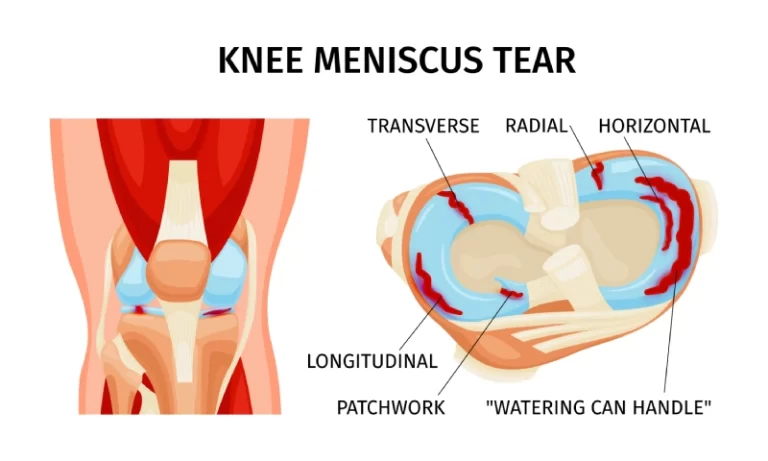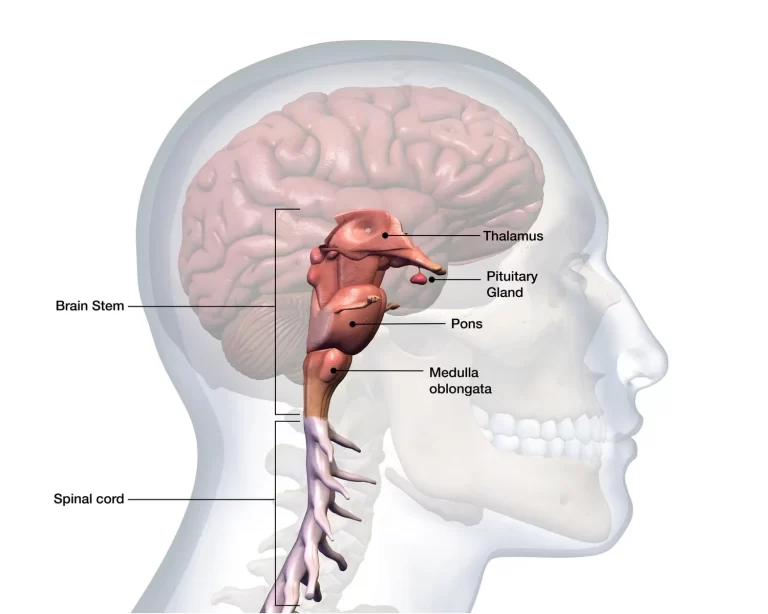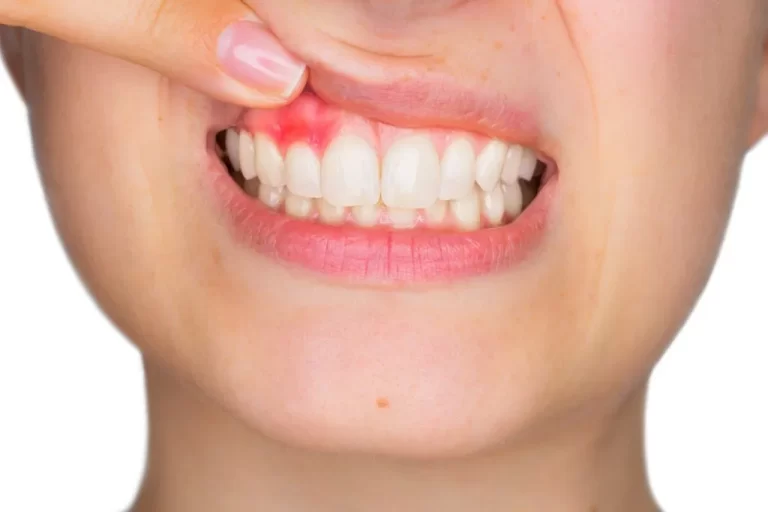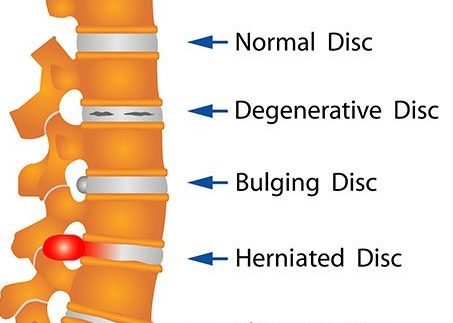Bow Leg (Genu Varum) and Physiotherapy Management
- Bowlegs is a condition in which a person’s legs appear bowed out, meaning their knees stay wide apart even when their ankles are together. Bowlegs is also known as congenital genu varum.
- This condition is fairly common in infants because of their cramped position in the womb. Typically, no treatment is necessary for infants. A child’s legs will begin to straighten when they start to walk, usually between 12 and 18 months of age. In most cases, there are no lasting side effects.
Causes of Bow Leg
Blount’s Disease
- Blount’s disease is a condition that can occur in toddlers, as well as in adolescents. It results from an abnormality of the growth plate in the upper part of the shinbone (tibia). Growth plates are located at the ends of a child’s long bones.
- They help determine the length and shape of the adult bone. In a child under the age of 2 years, it may be impossible to distinguish infantile Blount’s disease from physiologic genu varum. By the age of 3 years, however, the bowing will worsen and an obvious problem can often be seen in an x-ray.
Rickets
- Rickets is a bone disease in children that causes bowed legs and other bone deformities. Children with rickets do not get enough calcium, phosphorus, or Vitamin D—all of which are important for healthy growing bones.
- Nutritional rickets is unusual in developed countries because many foods, including milk products, are fortified with Vitamin D. When nutritional rickets does occur, it is often in those children who are exclusively breastfed.
- Rickets can also be caused by a genetic abnormality that does not allow Vitamin D to be absorbed correctly. This form of rickets may be inherited.
- Bowlegs don’t usually bother young children because the condition doesn’t cause pain or discomfort. Parents might worry about the appearance of their child’s legs or an awkward walking pattern. But bow legs don’t affect a child’s ability to crawl, walk, or run.
- Sometimes, kids with bow legs may walk with their toes pointed inward (called in-toeing, or pigeon-toes) or they may trip a lot and appear clumsy. These problems generally resolve as the child grows.
- If the condition lasts into the teenage years, it may cause discomfort in the ankles, knees, or hips.
- Most infants and toddlers have at least some physiologic bowing of their legs.
- Bowlegs in older children usually is because of Blount disease or another medical condition. Blount disease is more common in kids who:
- are overweight
- started walking at an early age
- have a family member who had the condition
Symptoms of Bow Leg
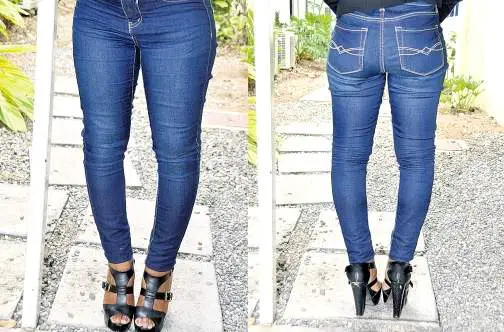
- Bowlegs don’t usually bother young children because the condition doesn’t cause pain or discomfort. Parents might worry about the appearance of their child’s legs or an awkward walking pattern. But bow legs don’t affect a child’s ability to crawl, walk, or run.
- Sometimes, kids with bow legs may walk with the toes pointed inward (called intoeing, or pigeon-toes) or they may trip a lot and appear clumsy. These problems generally resolve as the child grows.
- If the condition lasts into the teenage years, it may cause discomfort in the ankles, knees, or hips.
Diagnosis of Bow Leg
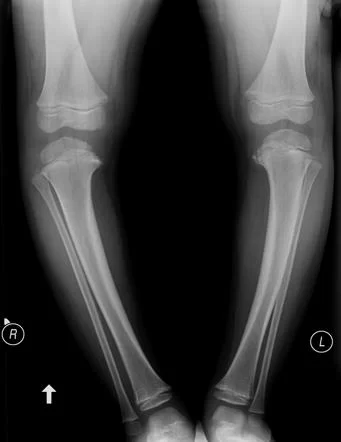
- Bowlegs are obvious when a child stands with legs straight and toes pointed forward.
- Bowing while stand and walk
- To document the positioning of the bowlegs and to look for any underlying bone deformities, IT IS recommended x-ray films of the knees. During infancy, however, there is no clear distinction between Blount’s disease and natural bowing.
- If your child is under 15 months of age, the x-ray can document the degree and location of bowing, but cannot be used to distinguish natural bowing from Blount’s disease until the baby is older.
Treatment of Bow Leg
- Specific treatment for bowlegs will be determined by the physician based on:
- child’s age, overall health, and medical history
- the extent of the condition
- the cause of the condition
- Child’s tolerance for specific medications, procedures, or therapies
- expectations for the course of the condition
- Depending on your child’s age, the doctor will probably advise delaying the treatment of bowlegs to give leg bones a chance to straighten naturally.
- If bowing of the legs does not correct itself, or increases after a child has been walking for some time, a physician may recommend corrective appliances.
- Night braces help to pull the legs slowly into a straighter position.
- Bowlegs caused by an underlying disease cannot be corrected completely until the disease itself is treated.
- A child usually wears a corrective brace during part of the treatment of the disease.
- If bowing is severe, your child’s doctor may recommend an osteotomy, an operation on the upper part of the shinbone that would correct the lower limb alignment.
- Treatment of Blount’s disease usually involves a combination of non-operative measures that include wearing a special brace and osteotomy. This brace, known as a modified knee-ankle-foot orthosis (KAFO), is designed to prevent knee flexion and must be worn day and night (23 hours a day).
- This brace works by releasing the compression forces in the area of the knee to allow the resumption of normal growth. Young children with the disease may not need surgery if the brace alone corrects the problem.
- Rickets can be corrected by adding vitamin D and calcium to the diet
Physiotherapy Treatment of Bow Leg
- if the child has pain then the deep heating modality will give pain relief
- SWD: short wave diathermy is a deep heating modality that uses heat to provide pain relief, it improves the blood supply to targeted muscles, removal waste products
Strengthening exercise of knee muscles
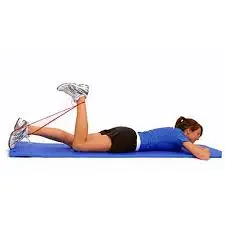
- Prone Theraband Knee Flexion: Theraband is a great tool to use with hamstring strengthening exercises.
- Starting Position: Tie the theraband so it forms a loop and hooks it around the foot of your good leg and the ankle of the leg you want to work. Lie on your stomach with your legs out straight.
- how to perform: Bring your heel towards your bottom pulling against the theraband as far as you can. Hold for 3-5 seconds and slowly lower the leg.
- Stability Ball Lunge: The lunge also targets and strengthens multiple muscles at once — hamstrings, core, glutes, and quads — and is a great example of using a stability ball for your hamstrings.
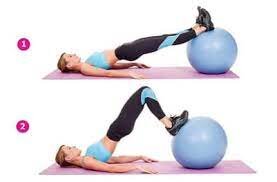
- how to perform: Place the stability ball behind you and place your left ankle on top. Keep your right foot flat on the floor. Bend your right knee until your thigh is parallel to the floor.
- Simultaneously, the ball should roll from your ankle to the shin. Your torso should remain upright and your left leg straight. Hold this position for several seconds before returning to the start position.
Strengthening exercise of hip muscles :
Donkey’s kick
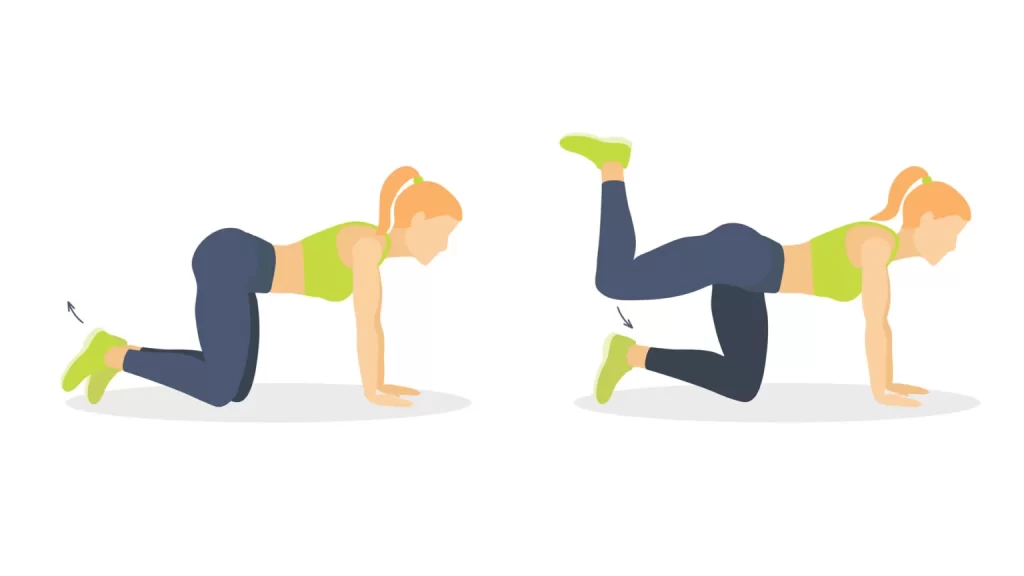
- How to: Get on all fours, with your hands stacked directly under shoulders, and knees under hips. Make sure your back is flat, and tuck your chin slightly so the back of your neck is facing the ceiling.
- Without rounding your spine, engage your lower abdominals. Keeping the 90-degree bend in your right knee, slowly lift your leg straight back and up toward the ceiling.
- Your max height is right before your back starts to arch, or your hips begin to rotate. Return to the starting position. Repeat all reps on one side, then switch legs.
Glute bridge

- Lie faceup on the floor, with your knees bent and feet flat on the ground. Keep your arms at your side with your palms down.
- Lift your hips off the ground until your knees, hips, and shoulders form a straight line. Squeeze those glutes hard and keep your abs drawn in so you don’t overextend your back during the exercise.
- Hold your bridged position for a couple of seconds before easing back down.
FAQs
Can Bowlegs be corrected?
An osteotomy is the procedure used to straighten the leg in adults and adolescents with developed skeletons. X-rays are utilized to locate the abnormality and measure its size. The tibia is typically treated, however there are instances where the femur or both the femur and the tibia are.
Is bow legs genetic?
Blount’s disease and consequently bow legs are more likely to develop in children who begin walking before they are 11 months old. A family history of bow legs, including degenerative diseases like osteoarthritis, may suggest a hereditary propensity for the problem.
What is a bow leg appearance?
It is a typical OA presentation that gives the knees a “Bow-leg” appearance. Due to this divergence, the ground reaction force is now focused more medially. “Medial Knee Osteoarthritis” results from the deviation’s compression of the medial structure and lengthening of the lateral structures.
Is bowed legs a disability?
You and your child can better handle bowlegs if it is identified and treated early on. The main and potentially incapacitating long-term impact of bowlegs is arthritis. Due to the unnatural strains placed on the body, it can have a serious impact on the knees, foot, ankles, and hip joints.
Can bow legs be cured naturally?
Under the age of two, bow legs in infants and toddlers usually go away on their own. The doctor who treats your child will keep tabs on his or her health. Depending on the underlying etiology of the disease, bow legs in older children may be treated.


